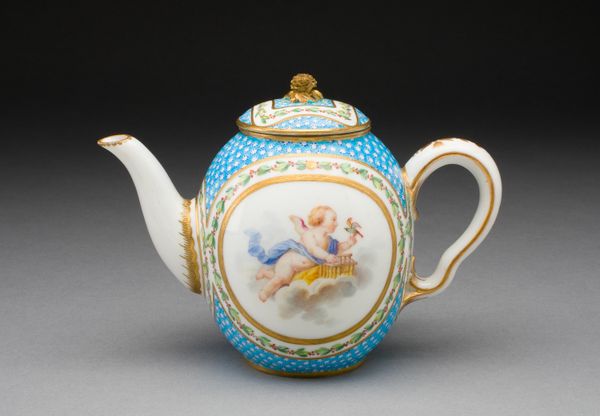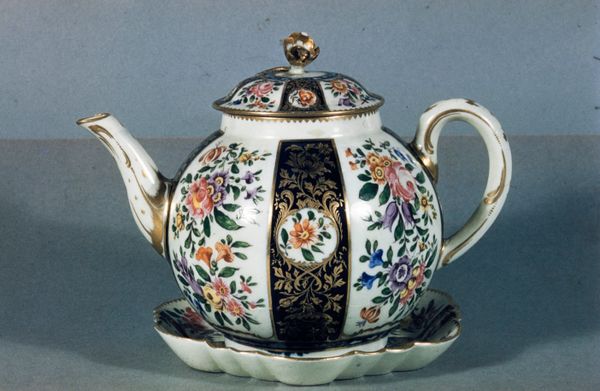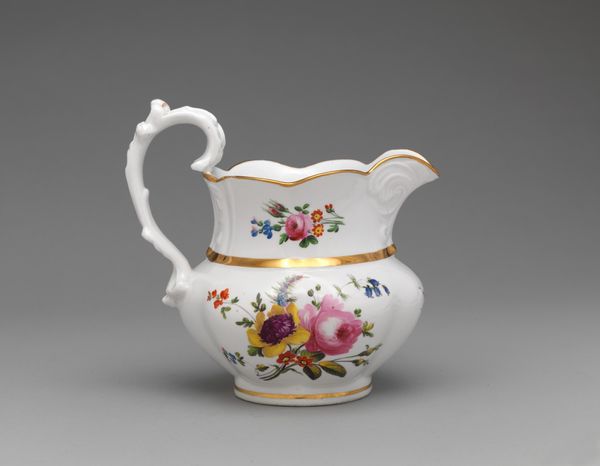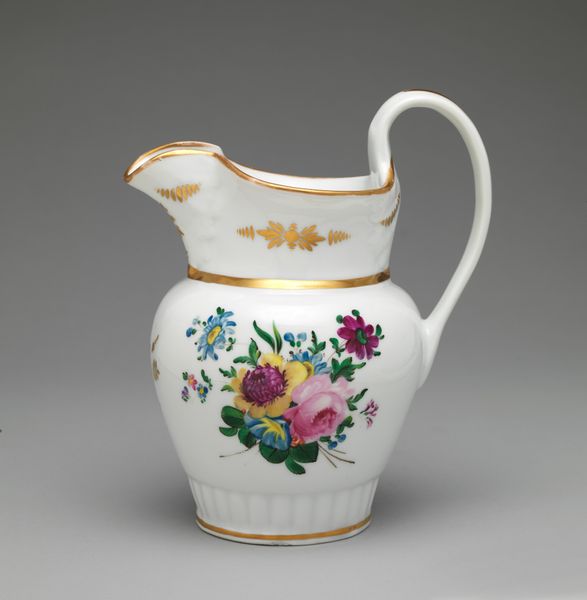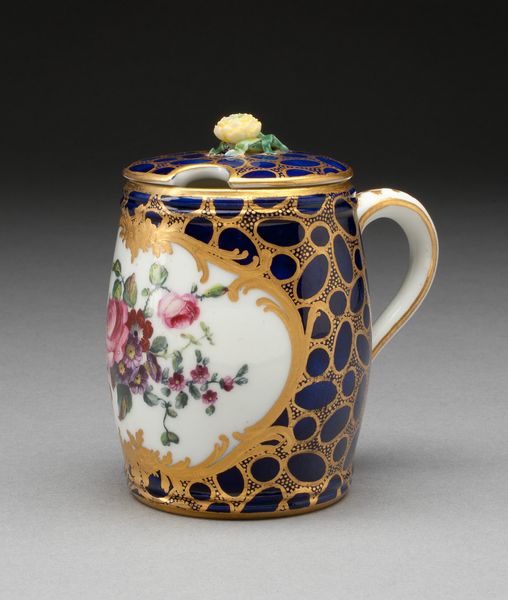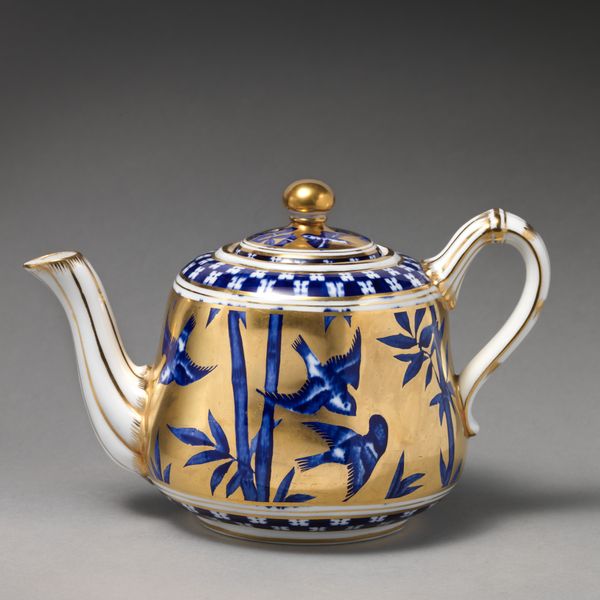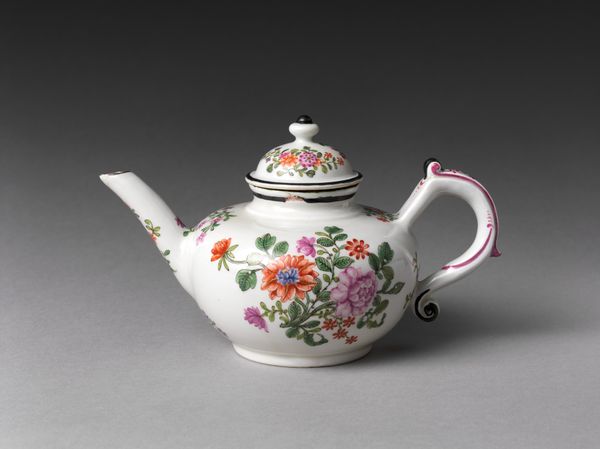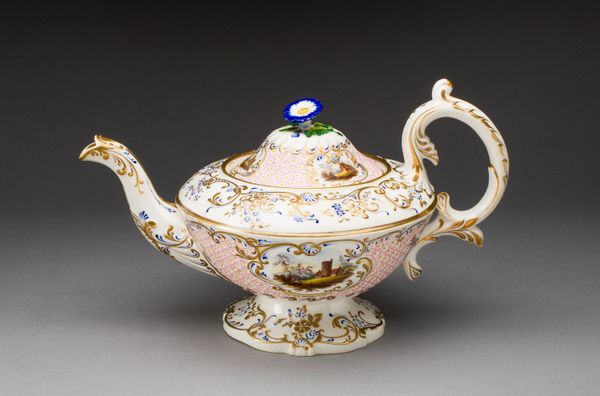
Dimensions: 10.2 × 14 × 7.6 cm (4 × 5 1/2 × 3 in.)
Copyright: Public Domain
Curator: Looking at this charming "Teapot," crafted in 1788 by Manufacture nationale de Sèvres, currently residing here at the Art Institute of Chicago... I must say, the very sight of it brings a smile. Editor: It’s…strikingly petite. Almost feels more ornamental than functional, though undeniably pretty. The cobalt blue against the gold is very bold, very…Marie Antoinette. Curator: It's Rococo at its finest! The soft curves, the delicate floral paintings framed in gold, and those tiny scattered golden dots dancing across the cobalt blue background – it is luxury distilled into porcelain. Editor: Absolutely. I’m thinking about the hands that made this—artisans whose livelihoods depended on royal patronage, painstakingly applying those perfect little dots and that elegant gilding. Were they aware of the rumblings beneath the surface, the impending revolution brewing while they crafted these symbols of extravagance? Curator: It is quite poignant to consider the social context, knowing what was soon to follow, isn’t it? I see it as capturing a fleeting moment of carefree beauty just before the storm. It almost sings of a lost era. Editor: And the material itself, porcelain—so coveted, so reliant on specific clays and firing techniques, all dictated by access and privilege. Each floral arrangement becomes a tiny monument to an unequal system, ironically decorating a vessel for a beverage enjoyed across social classes. Curator: Yes, but within each of those painstakingly painted blooms, each curve, each perfect little detail—isn't there a spark of enduring beauty, a whisper of hope? Maybe the hands that created it put their very essence, their spirit into that porcelain. Editor: Perhaps, or perhaps they were just trying to meet a quota and avoid the watchful eyes of the factory overseer. Regardless, seeing these objects allows us to connect to this distant era and reflect about the production of this piece and its connection to the end of this particular age in France. Curator: Thinking about the meticulous work it required is so important; thank you for your valuable and critical viewpoint! I see beyond it now and perceive a beautiful historical artifact embedded within that context.
Comments
No comments
Be the first to comment and join the conversation on the ultimate creative platform.


